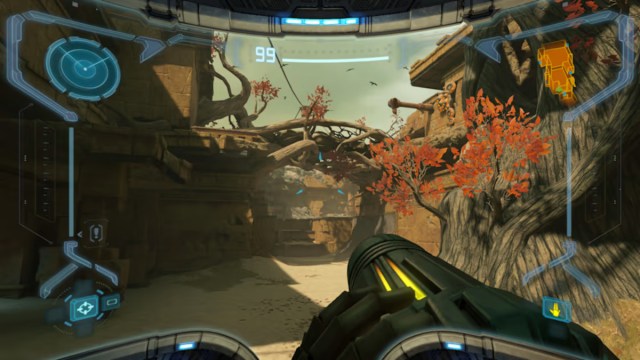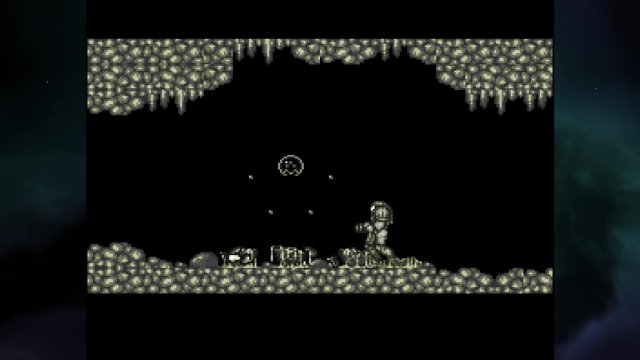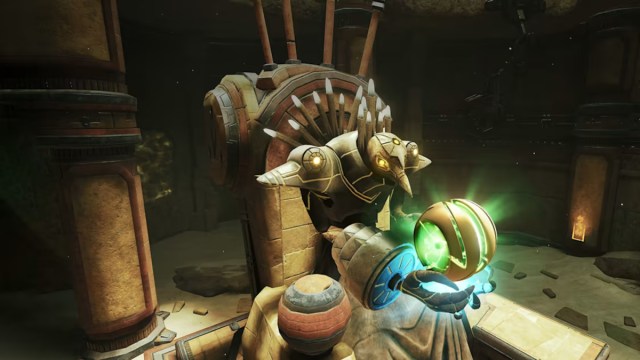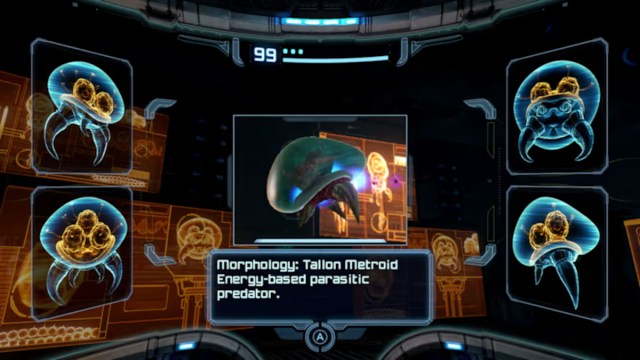Oh hey, Metroid is back again. That’s weird! If feels like we spent so much time wondering “where Metroid?” and then a switch (har har) was flipped and that question’s been answered rapid-fire. This time it’s a remaster of a classic, and I don’t mean classic in the usual sense. Metroid Prime is a bonafide masterpiece, and this new coat of paint only reinforces its status. Metroid Prime’s iron-clad pedestal makes even more sense today in our post-Dread world, showing what it actually means for an outside party to treat a creative work with some serious reverence.
Metroid isn’t just a series about blowing up aliens and opening up color-coded doorways. Sure, that’s the delivery mechanism and it’s a fun, genre-defining loop, but that’s not the point, yo. For decades Metroid had a sincere throughline of empathy pushing it along, challenging its peers and showing you could have a Doomguy-ass protagonist with a gun for an arm and still tell a thoughtful story, often without a single word spoken.
Related: Metroid Dread Review | Footsteps
The most recent Metroid games missed the point and then some, taking Samus Aran, removing any trace of her personality or previous journey and replacing it with a badass counterattack and extra explosions. Nevermind the whole thing about being haunted by guilt over eradicating a living species and working to repent. That’s boring, I guess. It’s amazing how Metroid Prime Remastered can drop out of nowhere, shove a twenty year-old game in our faces and punt that nonsense into the abyss. This is a real Metroid game, an exercise in not only Getting It, but taking that ball and running with it all the way to the goal.

It’s easy to just talk about atmosphere, to call Metroid Prime a “quiet” game that wants you to slow down and appreciate its own artistry. But that’s not really what makes this game so successful. It wholly embraces Samus Aran as a person who regrets their past mistakes and wants to get better, but is smart enough to know she can’t just bury it and walk away. If you look at the series’ trajectory, you can see right away where this game fits in.
Funny enough, Metroid Prime takes place between the original game and the sequel. So we aren’t actually seeing a Samus on that redemptive path yet. That’s Super Metroid. What Metroid Prime does is, for a more modern audience and with more space for it, lay some foundation for what’s quietly happening throughout the events of Metroid II. This is pre-genocide Samus, who we spend enough time with in Prime to learn exactly why post-genocide Samus is possible.

You have to pay attention to Metroid II to understand what’s happening and what that game is trying to communicate. And I mean really pay attention, because we’re talking about a Game Boy game here. Samus essentially destroys an entire ecosystem, and while that sounds like a normal, good time at a videogame party, that game explicitly condemns Samus and the player for it. As she tears through the Metroid home planet, the game loses its sense of life, growing more quiet and empty as the literal population counter ticks down to zero. It isn’t until the sole-surviving Metroid (the infamous Baby) imprints on her and helps her survive that Samus realizes what she’s done.

Again, Metroid Prime goes back and looks at Samus to think about what kind of person can live and exist in that environment and come to the emotional conclusion she does in later games. This results in a story concerned with life and history. Samus isn’t just plowing through Tallon IV and action heroing her way to the final boss. Despite crashing on a desolate planet full of danger, she makes a point to explore. Not just as a player searching for powerups, but as a person who is genuinely interested in her surroundings.

That’s where the scanners come in. You are constantly given the opportunity to interrupt Metroid Prime’s action to scan the environment. You can scan enemies, landmarks, parts of puzzles and more. You aren’t just given codex-style information dumps though, you’re looking at logs written by Samus as she interprets her observations scientifically. You don’t learn an enemy weakness from the game telling you “here’s the enemy weakness,” for example. Instead you read Samus’ observation of a creature’s body and surroundings to make inferences about how it lives, with “how to kill it” being more of a byproduct of learning. This is a Samus that chases Ridley on sight to kill that motherfucker, but it’s also a Samus that is capable of research and empathy for living creatures. Except for Ridley.
The updated visuals and stuff look real nice, too. Truly, it’s hard to look at Metroid Prime Remastered and remember it used to be a GameCube game. If you’re playing your Switch on TV Mode with a display capable of resolution scaling? Forget about it. Masterpiece. That’s all I have to say about that part.
Pros:
- It’s Metroid Prime in HD, what else do you want
Cons:
- Reminded me of how brainless the Metroid II Remake was
Score: 10
A copy of this game was provided by the publisher for review. Reviewed on Nintendo Switch.





Published: Feb 10, 2023 05:47 pm